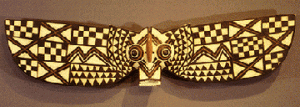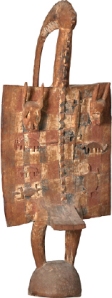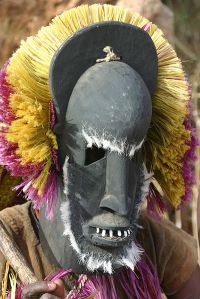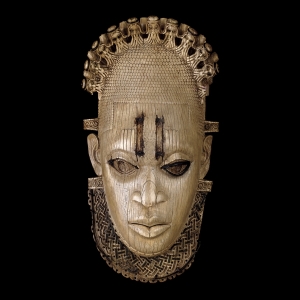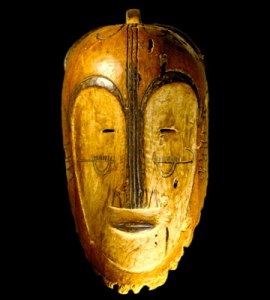Mask 1- Each mask was made according to a traditional style, and each was worn by a trained performer. The African masks that hang on walls of Western art museums, detached from their full-body costumes, were originally part of whole performance ensembles, consisting of elaborately costumed dancers, vibrant music, and highly stylized dances.
Mask 2-The mask is from a physical initiate transformation whereby the wearer takes on a new entity, allowing him to have influence on the spirits to whom he is appealing to or offering thanks.
Mask 3-The Dogon are best known for their religious traditions, their mask dances, wooden sculpture and their architecture. The past century has seen significant changes in the social organization, material culture and beliefs of the Dogon, partly because Dogon country is one of Mali’s major tourist attractions.
Mask 4-This type of mask was worn by the Oba, probably around his neck, during the the Emobo ceremony. The pendant is said to represent Queen Mother Idia, mother of Oba Esigie who ruled in the sixteenth century.
Mask 5-The white faced Ngil masks of the Fang, a people of Equatorial Guinea, northwest Gabon and South Cameroon, represent a masquerading tradition that waned over sixty years ago. They were worn by members of the male society of the same name during the initiation of new members and the persecution of wrongdoers.
